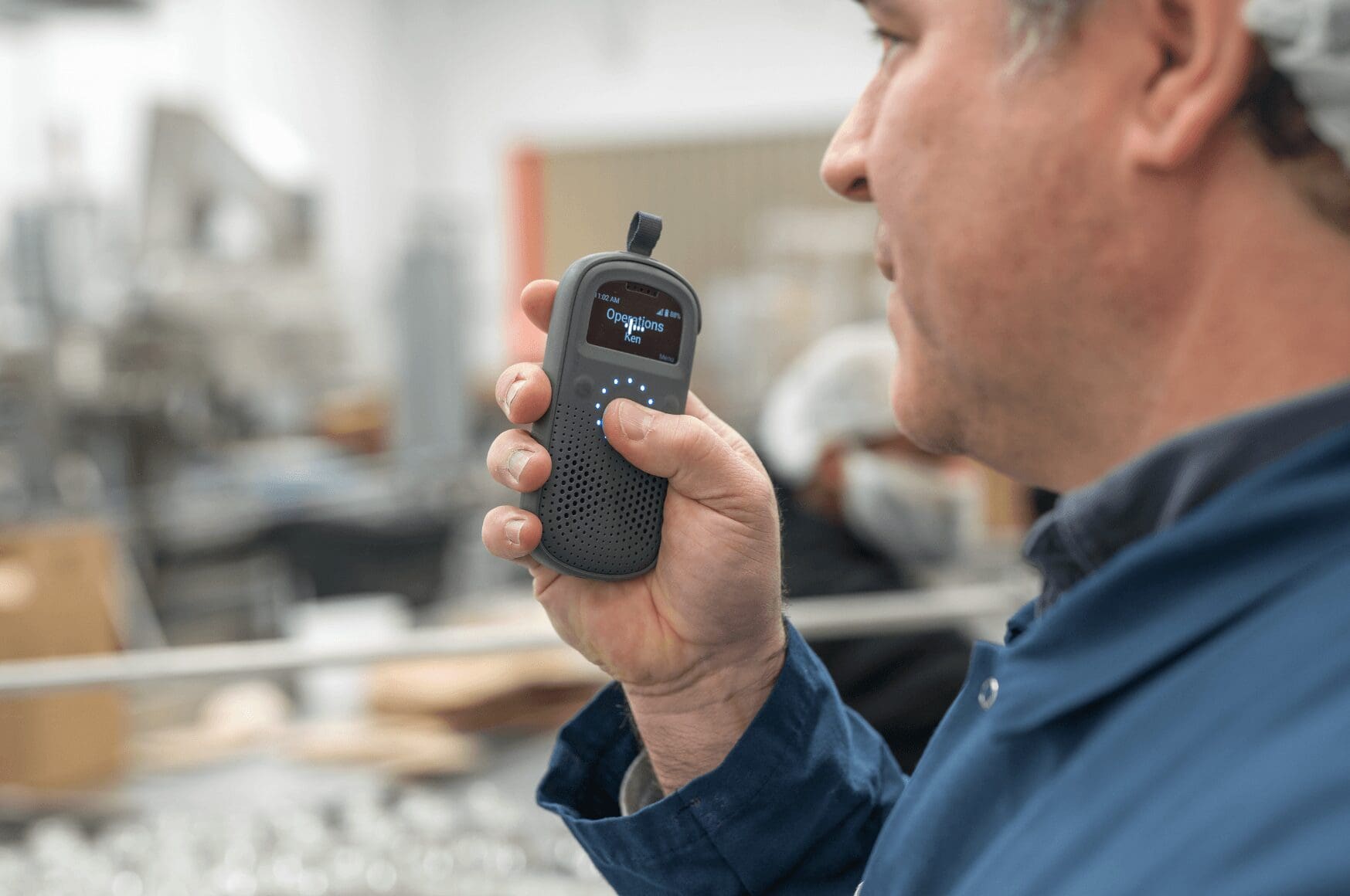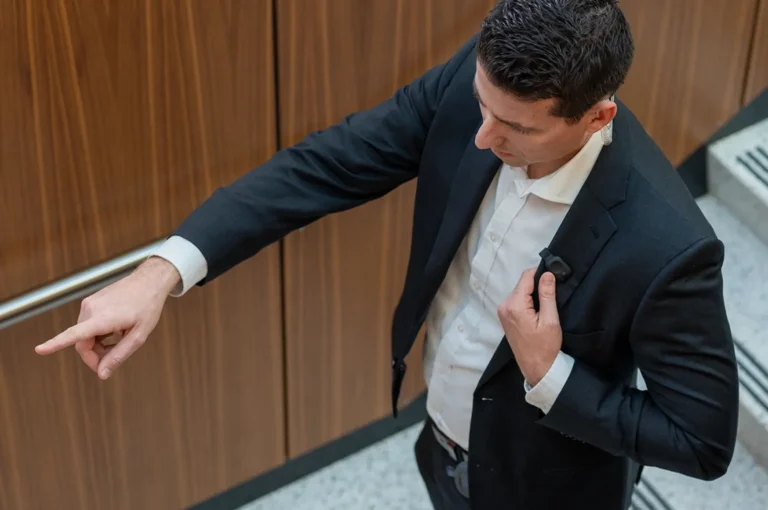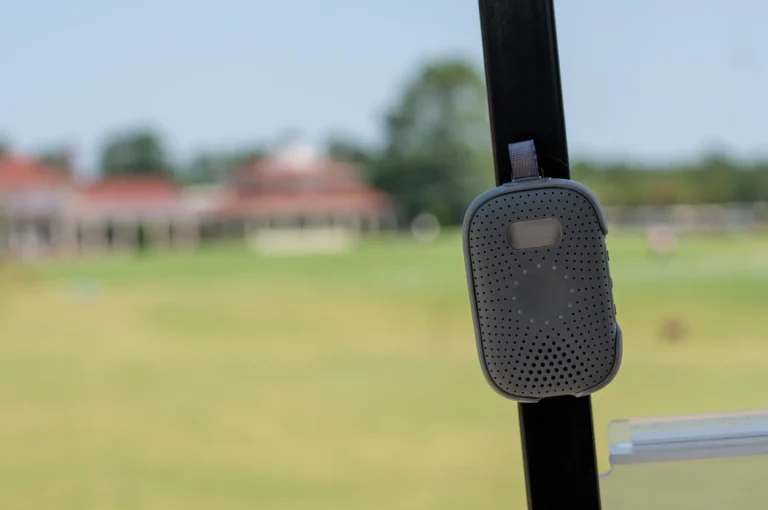Walkie-talkies became popular for recreational use in the 1970s and 80s, but even today, you’ll find character-themed walkie-talkies in every toy store. If you were a fan of these communication devices as a kid, you might secretly be thrilled to work in an industry where you get to use one to communicate. However, walkie-talkies can be serious business, and their effectiveness directly impacts your productivity and safety in the workplace.
Whether you work in manufacturing or hospitality, walkie-talkies can be valuable tools for communication. If you’re trying to figure out if a walkie-talkie is the right communication device for your team, we’ve put together the ultimate guide to walkie-talkies.
In this guide, we’ll take a look at the basic functions of a walkie-talkie, how they’re often used in the workplace, and what kind of limitations these devices may have.
What Is a Walkie Talkie?
Walkie-talkies and other two-way radios are often used for team communication because of how simple they are to use. Compared to cell phones and other communication devices, walkie-talkies allow workers to communicate across long distances, typically through radio waves. Portable radios are usually the most practical way to communicate across large teams.
Walkie-Talkies vs Two-Way Radios
You might hear walkie-talkies and two-way radios used interchangeably, but there is a difference between the terms. Two-way radio is a general term for any radio that provides two-way communication via radio waves. In short, all walkie-talkies are two-way radios, but not all two-way radios are walkie-talkies.
Walkie-talkies, more specifically, are often used for recreational circumstances since they don’t offer as many features as other two-way radios. However, they are sometimes used in smaller teams or more casual workplace situations.
Another difference between a walkie-talkie and other two-way radios is that walkie-talkies are always hand-held, while some two-way radios are mounted on the wall or connected to a vehicle.
When Were Walkie-Talkies Invented?
Two-way radio is a broad term that describes any portable transceiver device that allows for two-way communication. These communication devices allow users to communicate through the use of radio frequencies.
Portable radios were introduced in the 1930s for the purpose of helping pilots communicate with each other, but they weren’t called walkie-talkies at first. Later, they were used by soldiers during WWII. Although they weren’t originally known as walkie-talkies, Motorola helped to popularize the name. These devices became popular for personal and recreational use in the 1970s and 80s.
How Do Walkie Talkies Work?
While traditional radios, such as the ones found in vehicles, only receive communication one way, two-way radios and walkie-talkies offer an opportunity for two-way communication. Over the years, the materials used to make walkie-talkies have changed, and the features have become more advanced, yet their purpose remains the same – to allow people across various distances to communicate.
Walkie-talkie devices often feature a speaker, microphone, and antenna. These devices also have a push-to-talk button, which is usually held down while the user speaks and let go of to send the message.
Unlike cell phones and other communication devices, most walkie-talkies send and receive messages through radio frequencies. In those cases, to be able to hear the message of another person, your radio has to be on the same frequency or channel as another user.
Pros and Cons of This Communication Device
When we consider how walkie-talkies work and how they allow users to communicate efficiently, it’s easy to see why many workplace teams use them. Like any technology, however, there are both pros and cons to using this type of device.
Pros of Walkie-Talkies
Portable walkie-talkies allow workers to stay connected across distances. These types of radios are generally more affordable than cell phones, and there are various models that you can purchase easily.
Cons of Walkie-Talkies
One of the biggest cons of walkie-talkies is how limiting they can be for certain teams and industries. Although they do generally provide clear communication, they’re also prone to radio interference, which can impact whether vital messages get through or not.
There are ways to reduce radio interference, but many walkie-talkies have a limited number of channels, and interference can still happen, even while using shielding and filters. Walkie-talkies are also limited in how well they can communicate across certain distances, levels, and locations.
What Industries Use Walkie-Talkies?
Walkie-talkies aren’t as advanced as other two-way radios, but they’re still used as communication devices in numerous industries. They’re often more affordable, durable, and effective for communication in business settings than cell phones.
Some of the many industries that use walkie-talkies include:
- Hospitality
- Schools
- Warehouses
- Restaurants
- Golf Courses
- Construction
Overall, walkie-talkies are known for their simplicity and ease of use, allowing for real-time voice transmission in a variety of work settings.
Replace Your Walkie Talkie With Relay
While walkie-talkies can be reliable communication devices, many challenges come with this type of device as well. Some versions may be bulky to carry while others have limited channels and are prone to interference.
At Relay, we’ve combined the best features of mobile devices and two-way radios into one reliable communication device. Unlike your typical walkie-talkies, Relay’s smart radios allow you to communicate across long distances and different locations (nationwide) with longer battery life and additional operational insights.
Relay devices have modern communication features that walkie-talkies lack, such as panic alerts, real-time translation capabilities, and location tracking.
The communication device you choose for your team doesn’t just impact what messages get through – it can also have an impact on productivity, safety, and employee engagement. All of these factors can significantly impact the success of your business.
Whether you’re currently using two-way radios and looking for an upgrade or you’re trying to figure out what type of device is best for you, check out our customer stories to see the impact Relay has had on frontline teams.





